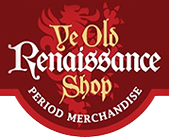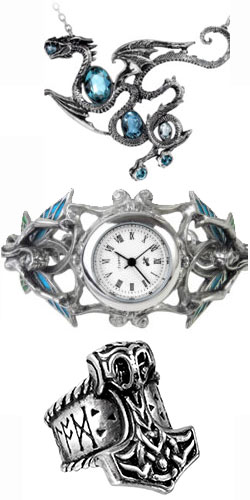How to Dress Renaissance
The Finer Points of Women’s Renaissance Clothing

When dressing for a renaissance fair, or attempting to portray a woman from that time, there are some definite key elements that should be observed when putting an outfit together. For the most part, the Renaissance was a time about displaying wealth through clothing. The history around the era sees a renovation of the classes of society and with the rise of the merchant class, status was bragged over and displayed through what men and women were wearing.
The Renaissance still had varied clothing that ranged from peasants to elaborate merchants or royals. Typically, the fabric in the renaissance was vibrant yet dark with long trains of fabrics and always adorned with layers of extravagant jewelry. The color of dress that a woman wore was indicative of her social class. For example, red clothing was worn by nobility. Because of this, it is important when dressing to observe the role and class you are dressing for and pick an appropriate color. Women’s clothing was extremely layered, often with more than 5 pieces: underskirt, hoop, skirt, vest, bodice, stomacher (a veering for the bodice) and collar.
Clothing of Renaissance Princesses and Queens
The gowns that women wore over their chemise came in one piece as a dress, or in two pieces and were always worn over a corset. Dresses were usually pleated or gathered over the bust and then belted. Two-piece outfits, the skirt of which was completely gathered, were laced up the front or side of the garment. The necklines of the dresses were another very important part of the renaissance clothing for women. Mid-renaissance found necklines on dresses rounded but high on the neck. Near the end of the renaissance, necklines were low and square or v-necked, held together with lacing.
Usually the type of occasion was understood by the amount of jewelry a woman was wearing, the type of fabric used in the dress and the amount of lace detail on the dress. A more casual outfit for women was an underdress and an outer dress. The underdress was one piece of fabric, with a semi-fitted silhouette. The outer dress was sleeveless, often tied right under the bust so the sleeves and hem of the chemise dress were visible. The neckline of the outer dress was a wider square than the underdress with also wider sleeves. The important details when choosing a costume, is making sure that the sleeve puff and the neckline match. In the renaissance, the fashionable neckline and sleeve width changed based on who was ruling and what the time period was.
Clothing of Renaissance Wenches and Peasants
If you are dressing the part of a peasant, that has a specific look too. Peasants usually wore clothing that was utilitarian and made of wool. Though the fabric was not as colorful, vibrant or elaborate, peasants wore several layers of clothing also. The layers of peasants were comparable to that of the women of nobility but substantially different in quality.
Renaissance Accessories
Women wore lots of jewelry, the more layered and ornate the better. Jewelry was worn at all times but especially for certain occasions or celebrations. Headdresses were an important part of women’s fashion in the renaissance. Veils, hoods and pieces were all incorporated into outfits, allowing hair to peek through, and were usually adorned with flowers, lace or jewels. The most famous headdress of the renaissance is the pointed cone style with the hair pulled out of the point and then braided or bundled.
When choosing a medieval costume for a renaissance fair, be it a princess costume or a wench costume, ensure historical accuracy by paying attention to necklines and sleeve widths. Keep wench or peasant costumes minimal and utilitarian and ensure that costumes of nobility are opulent and decadent.
Allie
Ye Old Renaissance Shop

